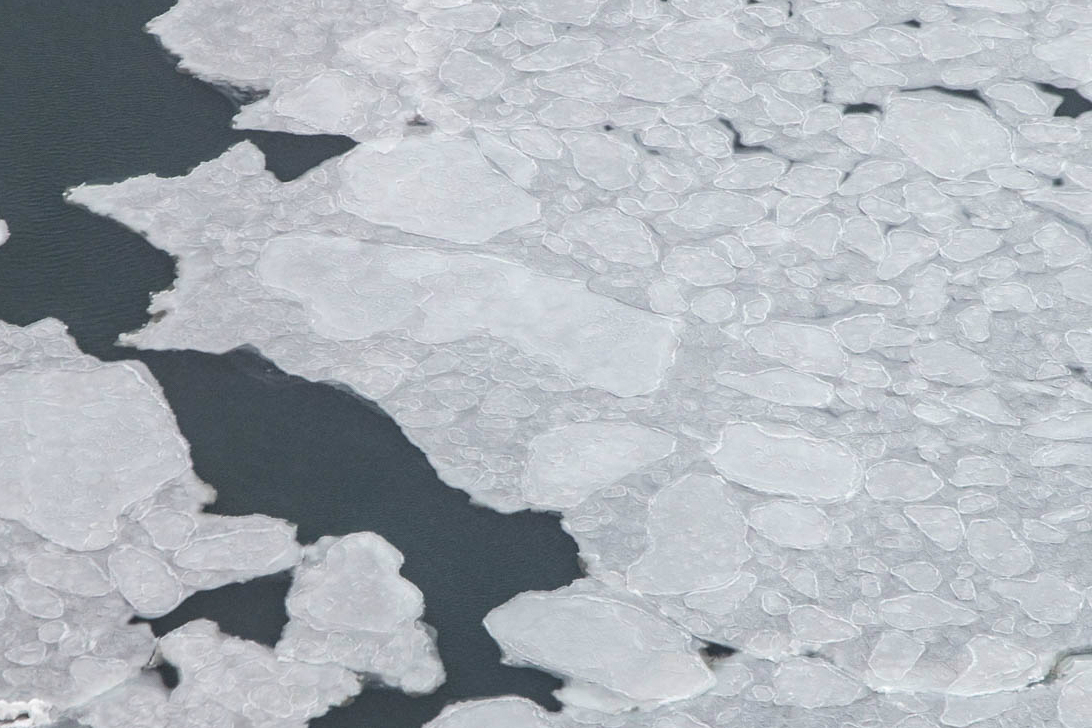Thinning Arctic sea ice influences the atmosphere — with spinoff effects for Eurasia, study says
Multi-year ice in the Arctic has dramatically declined — and thinner young ice allows heat stored in the ocean below to escape, which in turn is likely to alter weather patterns.

As Arctic sea ice thins as well as retreats, the world should expect weather patterns to change, a new study says.
Even if sea ice continues to exist, increasingly thinner ice will allow heat from the ocean to create “substantial warming” over the Arctic during winter, the researchers found. And through changes to atmospheric patterns, that could cause temperatures in Eurasia to drop by up to 1 degree Celsius, according to the study, which is published online in the journal Geophysical Research Letters.
“There’s a heat flux that comes from the ocean to the atmosphere,” said lead author Zack Labe, a University of California, Irvine scientist studying Arctic ice and its effects on weather. “When the ice is thinner, that heat flux can actually go through the ice.”
The Arctic pack, once dominated by freeze that lasted for several years, has been transformed in the past decades, information from the National Snow and Ice Data Center shows. In the 1980s, it was dominated by freeze that lasted for several years and was thick. At the nine-week point of 1984, 61 percent of the pack was multiyear ice and the remainder was ice that formed up in winter but melted out in the summer, according to the NSIDC.
Now, that ratio has flipped. Only 34 percent of the ice pack as of the 9th week of this year was more than a year old, and only 2 percent was very old ice, five or more years old, according to the NSIDC. In the 1980s, about 30 percent of the ice was five years old or older.
Loss of ice thickness, the newly published study shows, is yet another way that Arctic sea ice conditions affect the rest of the world. Already, there is much attention given to ice extent – the amount of area where ice covers at least 15 percent of the water’s surface – and the concentration of that ice coverage. Those measurements have been made since 1979 through satellite technology.
Tracking ice thickness and how it has changed has not been as easy, Labe said. Only for about the past 10 years have satellites been used to record thickness; previous measurements had to rely on modeling, he said. “We do have a better handle on sea ice thickness now,” he said. The problem is that the precise record does not go very far into the past, he said.
The newly published study, which was co-authored by two of Labe’s UC-Irvine colleagues, is likely the first to come up with any quantified measurements showing how the atmosphere response to ice thinning, as opposed to the extent of the water that is covered by ice.
Low concentration of ice – spotty coverage of the water’s surface that leaves large areas of open water – will still play a much bigger role in creating warm temperatures, the new study finds. But if ice is thin, the amount of heat that seeps through it can cause up to a third of the warming that is caused by low ice concentration, the study found.
The biggest thin-ice effect comes from areas like the Barents, Kara and Bering seas that are on the edge of the Arctic, the study found. “It seems like the biggest impact to the atmosphere is when the sea ice is lost in the margins,” Labe said.
The Bering had record-low ice this winter — the lowest amount in more than 150 years of records — and as of mid-May, ice was almost entirely gone from the basin.
The melt has also been rapid north of the Bering Strait in the Chukchi Sea. As of May 22, in both the Chukchi and the Bering, “The ice extent is the lowest in the 40-year satellite record,” Rick Thoman, climate science and services manager for the National Weather Service, said in his monthly climate briefing, held Thursday. The Chukchi melt is faster even than that of last spring, and in both years May ice was “quite dramatically lower than anything else,” Thoman said.
The UC-Irvine study used simulations calculated with records from 1976 to 2005 and projections about ice conditions expected in the second half of the 21st century. A high-emissions scenario, with emissions assumed to remain at 2000 levels, is used.
While it found that thinner ice does influence the lower and middle levels of the atmosphere, potentially shifting the jet stream southward, the study found “no significant response” to loss of ice thickness in the stratosphere. That upper level is the site of the polar vortex, the counterclockwise flow of air around the low-pressure system above the North Pole. The study did find that lower sea ice concentration influences the stratosphere and strengthens the polar vortex.